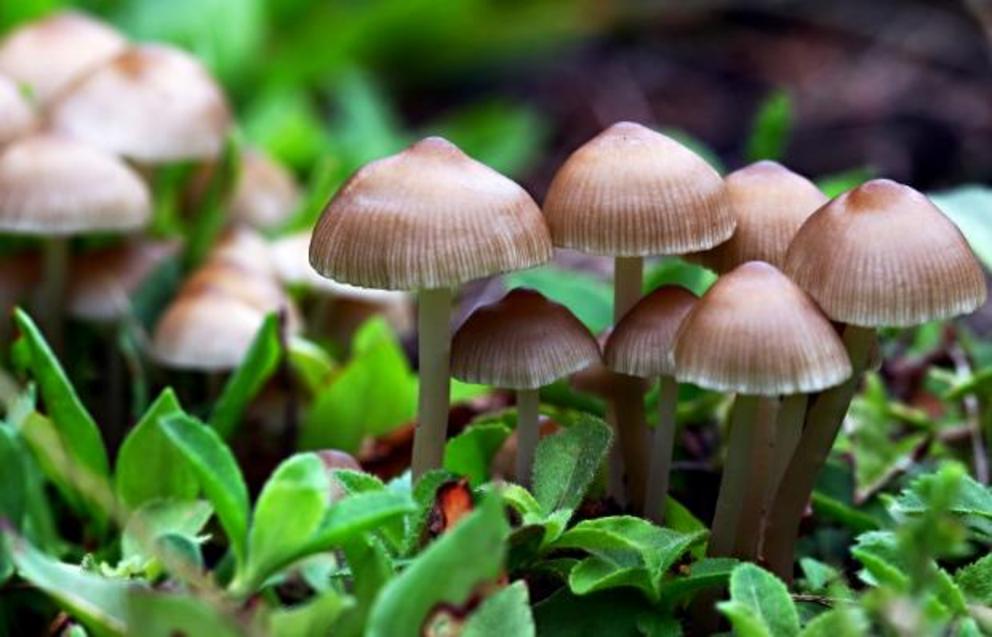Future homes may soon be made of eco-friendly mushroom 'bricks'
Mushrooms make for a savory, vitamin D-rich addition to a balanced diet. But it turns out, they make for more environmentally friendly “bricks,” too.
Lightweight, durable and biodegradable, mushrooms are proving to be a good alternative for bricks made from clay, concrete and other conventional but polluting construction materials.
How it works is agricultural waste materials like straw is combined with mycelium, a network of fungal threads that function as mushrooms’ “roots.” It will be left to grow into a brick for two weeks.
The product will then be “cooked” in an oven or treated with chemicals to kill the fungi. The fungi will continue to eat the supporting material that initially gave them structure. But cooking or treating it with chemicals stops the fungi from eating the material and weakening the product’s integrity.
David Benjamin, founding principal architect of the New York-based design firm The Living, said that the built environment needs more materials like mushrooms. In a video demonstrating how to make a mushroom “brick,” Benjamin explained that mushrooms could be used to grow entire structures in the future.
These structures can then be “returned” to the Earth due to their biodegradable nature rather than dump them in landfills, which is where most building materials end up.
In fact, the United Nations Environmental Program says that building materials and construction account for almost 40 percent of humanity’s carbon dioxide emissions each year. Therefore, using more environmentally-friendly materials like mushrooms for construction may help reduce construction-related carbon emissions.
Mushroom “bricks” could be the future of construction
Mushrooms might be the next big thing when it comes to engineering structures. Phil Ayres, an architectural researcher at Copenhagen’s Center for Information Technology and Architecture, founded a project called Fungal Architectures (FUNGAR) in 2019 with other architects, computer scientists and mycologists.
The team aims to develop a structural and computational living substrate using mycelium for the purpose of growing architecture. Since launching in 2019, the team has been experimenting with creating building materials out of mycelium. Ayres said he hopes the project will go well beyond mushroom bricks.
The current technology used to make mushroom bricks entail killing the mycelium to stop it from eating the structural support. Though useful for creating bricks and building small structures, this technology prevents architects and engineers from growing taller structures.
Ayres said a workaround would be to build walls that have a live layer of mycelium sandwiched between two dead layers of mycelia.
Mycelium needs a moist environment to produce mushrooms. Nothing will happen if it is deprived of water. The idea is by sandwiching the live layer of mycelium between two dead layers, the live layer will remain dormant until needed. FUNGAR plans to test this by building a structure made of living mycelium.
Though promising, fungal architecture is still in the very early stages of research and development. But it is already being considered as a construction material for building habitats on the moon or on Mars.
Lynn Rothschild, an astrobiologist at the National Aeronautics and Space Administration‘s (NASA), Ames Research Center, said traditional habitat designs for Mars are reliable but come with big energy costs.
So instead of taking concrete or steel on space expeditions, astronauts can take mycelium-grown building materials and grow their habitats and other important structures upon reaching the moon or Mars.
Companies like Ikea and Dell have also started using mushroom-based packaging materials, while a Dutch company has launched a prototype “mushroom coffin” that speeds up the decomposition process, removes toxic materials from the ground and even helps grow new trees.
For full references please use source link below.

